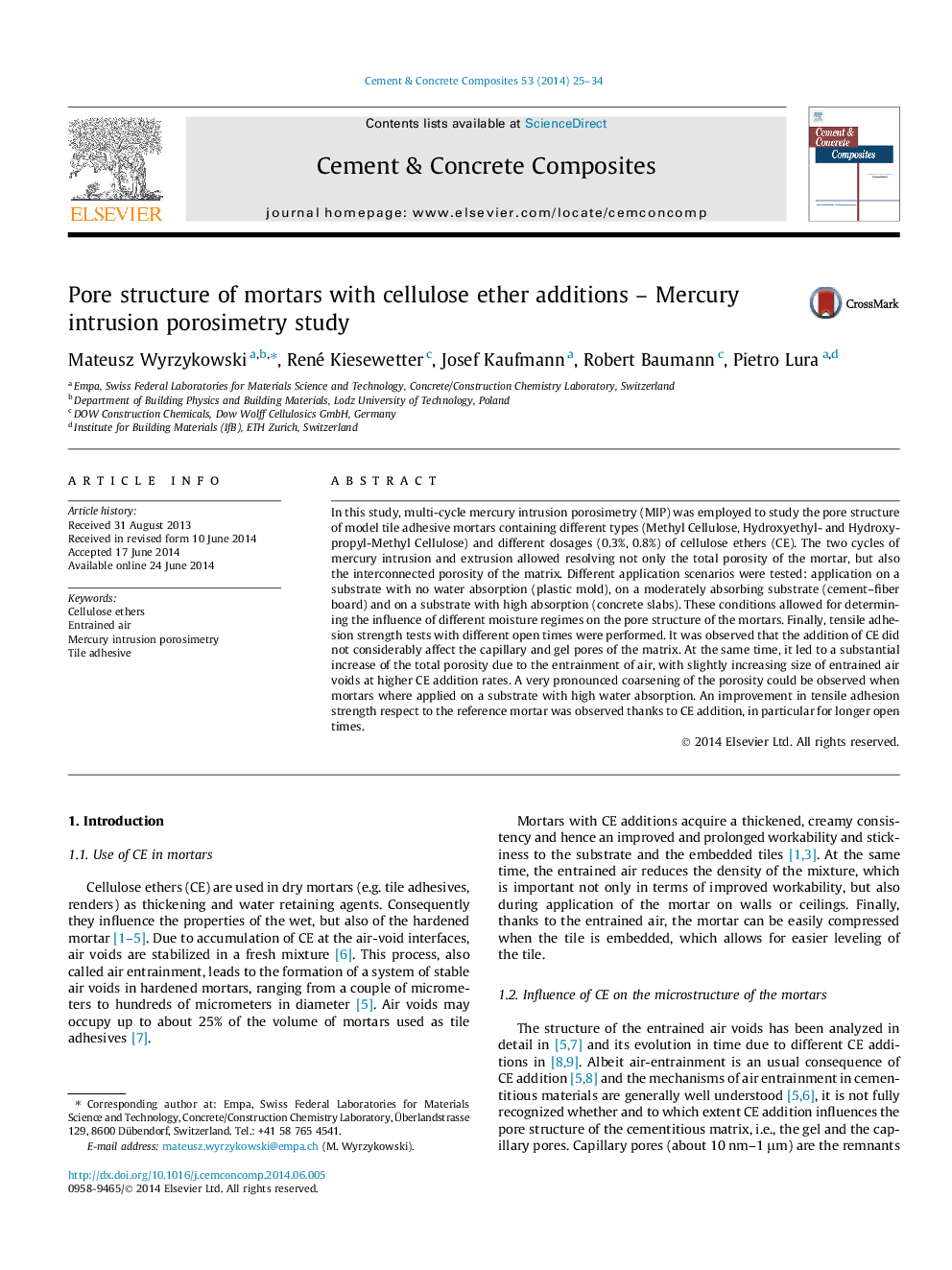| کد مقاله | کد نشریه | سال انتشار | مقاله انگلیسی | نسخه تمام متن |
|---|---|---|---|---|
| 1454539 | 1509680 | 2014 | 10 صفحه PDF | دانلود رایگان |
In this study, multi-cycle mercury intrusion porosimetry (MIP) was employed to study the pore structure of model tile adhesive mortars containing different types (Methyl Cellulose, Hydroxyethyl- and Hydroxypropyl-Methyl Cellulose) and different dosages (0.3%, 0.8%) of cellulose ethers (CE). The two cycles of mercury intrusion and extrusion allowed resolving not only the total porosity of the mortar, but also the interconnected porosity of the matrix. Different application scenarios were tested: application on a substrate with no water absorption (plastic mold), on a moderately absorbing substrate (cement–fiber board) and on a substrate with high absorption (concrete slabs). These conditions allowed for determining the influence of different moisture regimes on the pore structure of the mortars. Finally, tensile adhesion strength tests with different open times were performed. It was observed that the addition of CE did not considerably affect the capillary and gel pores of the matrix. At the same time, it led to a substantial increase of the total porosity due to the entrainment of air, with slightly increasing size of entrained air voids at higher CE addition rates. A very pronounced coarsening of the porosity could be observed when mortars where applied on a substrate with high water absorption. An improvement in tensile adhesion strength respect to the reference mortar was observed thanks to CE addition, in particular for longer open times.
Journal: Cement and Concrete Composites - Volume 53, October 2014, Pages 25–34
